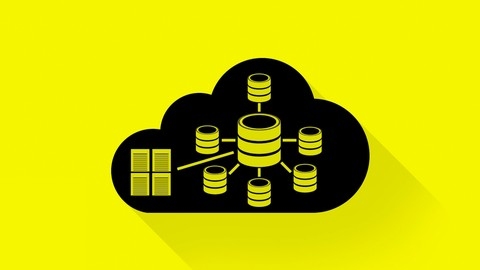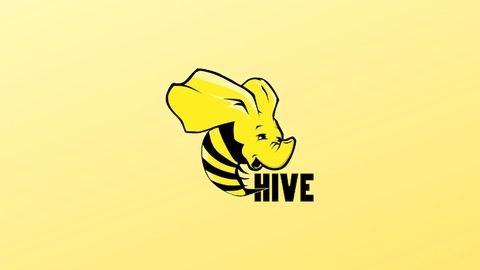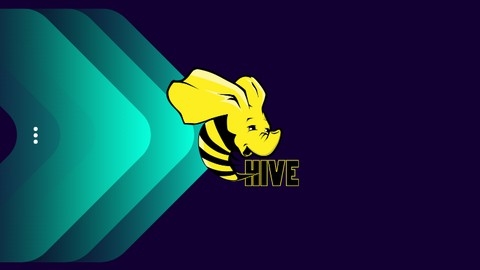Apache Hive is a data warehousing system built on top of Hadoop, designed for querying and analyzing massive datasets.
It provides a SQL-like interface, called HiveQL, making it easier to work with large-scale data without needing to write complex MapReduce jobs.
Learning Hive is essential for anyone working with big data, opening doors to exciting careers in data engineering, data analysis, and data science.
Finding a comprehensive and engaging Apache Hive course on Udemy can be a daunting task.
With so many options available, it can be hard to know which course is right for you.
You want something that goes beyond theory, providing practical experience and hands-on projects to solidify your understanding.
For the best Apache Hive course overall on Udemy, we recommend Hive to ADVANCE Hive (Real time usage) :Hadoop querying tool.
This course stands out for its in-depth coverage of Hive concepts, from basic commands to advanced features like partitioning, bucketing, and custom UDFs.
You’ll learn how to work with different file formats, optimize queries for performance, and even delve into real-world use cases and interview questions.
While this is our top pick, other excellent Apache Hive courses on Udemy cater to different learning styles and goals.
Keep reading to discover our recommendations for beginners, intermediate learners, and experts, as well as courses focusing on specific Hive features and applications.
Hive to ADVANCE Hive (Real time usage) :Hadoop querying tool
You’ll start by learning the basics of Hive, including its architecture, basic commands, and how it differs from SQL.
You’ll then dive into core Hive concepts like creating databases, defining table schemas, loading data into tables, and working with internal vs. external tables.
The course covers essential data manipulation techniques such as sorting, filtering with functions, conditional statements, and advanced functions like explode, lateral view, rank, and rlike.
A major focus is partitioning and bucketing data in Hive for efficient querying.
You’ll learn static and dynamic partitioning, altering partitioned tables, and bucketing concepts.
Table sampling and advanced commands like no_drop and offline are also covered.
The course provides in-depth coverage of joins in Hive, including inner, outer, and multi-table joins, as well as optimization techniques like map joins.
You’ll learn to create and use views, a powerful abstraction layer.
Advanced topics include indexing (compact and bitmap), user-defined functions (UDFs), setting table properties like skipping headers/footers and null formats, and understanding ACID/transactional properties of Hive tables.
You’ll explore Hive configurations, settings, and variables (hiveconf and hivevar), executing queries from bash, and running Unix/Hadoop commands within the Hive shell.
The course dives into different file formats like text, sequence, Avro, RC, ORC, and Parquet, helping you choose the right one.
Other key areas are custom input formatters, Hive modes, compression techniques, the Tez execution engine, loading XML data, and implementing slowly changing dimensions (SCDs) to capture updated data.
The course covers real-world use cases like word count, handling multiple tables on a single file, and interview questions.
You’ll gain hands-on experience with Hive installation and work through coding examples throughout.
Learning Apache Hadoop EcoSystem- Hive
The course starts by explaining what Hive is, its motivation, and use cases, making it clear what you’re getting into.
It also covers what Hive is not, so you understand its limitations.
You’ll get a recap of Hadoop to ensure you have the necessary foundation.
Then, the course dives into the Hive architecture and its different modes, including the important Hive Server 2 concepts.
After solidifying these basics with quizzes, you’ll move on to the hands-on part.
The installation and configuration section is comprehensive, covering CDH, CM, and setting up a VM for demos.
You’ll learn Hive shell commands, configuration properties, and how to integrate with MySQL.
Once you have the environment set up, the real fun begins.
The course covers databases, datatypes, and the key concepts of schema on read and schema on write in Hive.
You’ll work with internal and external tables, partitioning for efficient data organization, and bucketing for performance optimization.
Quizzes reinforce your understanding of these practical topics.
But it’s not just theory - you’ll see how Hive is implemented in real-time projects.
The course even touches on auditing in Hive, which is crucial for production environments.
If you face any issues, there are dedicated sections on troubleshooting infrastructure and user problems in Hive.
With hands-on demos, quizzes, and a focus on practical skills, you’ll be well-equipped to work with Hive after completing this course.
From 0 to 1: Hive for Processing Big Data
This course is designed to take you from a novice to a confident Hive user, equipping you with the theoretical knowledge and practical skills to effectively work with this essential data processing engine.
The course starts with the fundamentals, guiding you through the architecture of Hive, its interaction with Hadoop, and the key differences between Hive and traditional relational databases.
You’ll then dive into HiveQL, Hive’s SQL-like query language, and learn how to write efficient queries to extract meaningful insights from your data.
You’ll gain hands-on experience by installing both Hadoop and Hive, following detailed instructions for standalone and pseudo-distributed modes.
The course also provides a thorough exploration of the Hadoop Distributed File System (HDFS), the backbone of Hive’s data storage, and teaches you how to interact with it using the command line.
You’ll practice essential data management tasks such as creating tables, inserting data, and performing various operations using HiveQL.
Beyond the basics, the course delves into advanced features like built-in functions, subqueries, views, partitioning, and bucketing.
These techniques enable you to optimize your queries, improve performance, and efficiently manage large datasets.
You’ll also learn about windowing, a powerful tool for performing calculations over data partitions, and gain a deep understanding of MapReduce, the framework that powers Hive’s data processing.
To give you maximum flexibility, the course teaches you how to write custom functions in both Python and Java.
You’ll explore the different types of custom functions, including UDFs (User Defined Functions), UDTFs (User Defined Table Generating Functions), and UDAFs (User Defined Aggregate Functions).
The course goes into detail about implementing these functions in Java, providing a solid foundation for understanding the underlying mechanisms.
The course concludes with a thorough review of SQL, covering essential concepts such as select statements, group by, order by, having, and various join types.
You’ll master the art of manipulating data and extracting valuable insights from your datasets using SQL queries.
And if you are a Windows user, the course even provides guidance on setting up a virtual Linux environment, ensuring you can follow along with all the practical exercises.
Sqoop, Hive and Impala for Data Analysts (Formerly CCA 159)
You’ll start with a hands-on experience using Cloudera’s QuickStart VM, a virtual machine environment that lets you explore the Big Data ecosystem.
You’ll get familiar with the Hadoop Distributed File System (HDFS) and learn to use commands like “hadoop fs” to navigate and manage files within it.
Diving deeper into Hive, you’ll learn to create databases, tables, and partitions.
You’ll explore different file formats like orc and master data loading techniques from local files, HDFS, and even MySQL databases using Sqoop.
The course covers Apache Hive’s query language, empowering you to write complex queries, including joins, subqueries, and aggregations.
You’ll learn to optimize your queries using DISTRIBUTE BY, SORT BY, and CLUSTER BY clauses for better performance.
One of the course’s strengths is its coverage of advanced topics, like ACID transactions and windowing functions.
These are crucial for performing analytical operations on your data.
You’ll also learn about Impala, a high-performance query engine that can significantly speed up your queries on Hive tables.
It offers a well-structured path from foundational concepts to more advanced topics, making it a solid foundation for working with large-scale data using Hive.
Big Data Analyst -using Sqoop and Advance Hive (CCA159)
This course offers a comprehensive and practical introduction to two essential tools in the Big Data ecosystem: Sqoop and Apache Hive.
You’ll learn how to effectively move data between different systems, a crucial skill for any data analyst or engineer working with large datasets.
The course begins with a solid foundation in Hadoop and its distributed file system, HDFS, which is essential for understanding how data is stored and processed in a big data environment.
You’ll then dive into the intricacies of Sqoop, learning to import data from sources like MySQL into Hive using a variety of file formats and compression techniques.
You’ll also discover how to handle incremental data updates and optimize data transfers using powerful features like split-by and boundary queries.
Beyond data imports, the course covers Sqoop’s export functionality, allowing you to transfer data back from HDFS or Hive to MySQL.
This gives you the flexibility to manage your data flow efficiently.
You’ll also explore the integration of Sqoop with Airflow, a popular tool for building and managing data pipelines.
The course then delves into Apache Hive, a powerful data warehousing system built on top of Hadoop.
You’ll master a range of Hive commands, including Insert and Multi-Insert, and explore different data types, including complex ones like Arrays, Maps, and Structs.
You’ll learn to effectively work with advanced features like Partitioning and Bucketing, which allow you to organize and query massive datasets efficiently.
You’ll also gain proficiency in using different types of joins in Hive, including multi-joins and map-side joins.
You’ll work with various file formats like Parquet and Avro, and explore the concept of Views in Hive, enabling you to create virtual tables for simplified data access.
The course also covers powerful Hive windowing functions, including Rank, Dense Rank, Lead, Lag, Min, and Max, which enable more sophisticated data analysis.
By completing this course, you’ll gain a robust skillset in working with Big Data using Sqoop and Hive, making you a more valuable asset in the world of data analysis and engineering.
Apache Hive for Data Engineers (Hands On) with 2 Projects
This course is a practical deep dive into Apache Hive, designed to equip you with the skills you need to work with this powerful data warehousing tool.
You’ll start by getting your hands dirty, installing Hive on an Ubuntu machine, a valuable skill for anyone setting up their own environment.
The course then breaks down Hive’s architecture, explaining how queries flow through the system.
You’ll delve into Hive’s data model, learning about tables, partitions, and buckets, which are fundamental concepts for organizing your data.
You’ll explore data types, both primitive and complex, which are crucial for defining your data structures.
The course then covers Hive’s Data Definition Language (DDL) and Data Manipulation Language (DML), enabling you to create, manipulate, and manage your databases and tables.
You’ll gain experience with a wide range of commands, including loading, selecting, inserting, updating, and deleting data.
The course also covers essential built-in functions for dates, math, and strings, which will help you write more efficient and powerful queries.
You’ll learn about views, metastores, and partitions, empowering you to manage and organize your data effectively.
Throughout the course, you’ll put your knowledge into practice through hands-on exercises involving Hive interactive shell commands, variables, operators, and joins.
You’ll even explore how to work with XML and JSON data formats, essential for handling real-world datasets.
The course culminates in two comprehensive projects, guiding you through the complete process of using Hive and Apache Zeppelin to analyze real datasets.
Big Data Internship Program - Data Processing - Hive and Pig
The course effectively breaks down Hive’s architecture, demonstrating its interaction with other components and how queries are executed.
You’ll dive into data types, gain hands-on experience with both internal and external tables, and learn the importance of partitioning for efficient data organization.
The inclusion of dynamic partitioning is particularly valuable, showcasing a powerful feature that automates table creation based on data characteristics.
The shift to Apache Pig introduces another essential tool for large-scale data processing.
You’ll explore Pig’s architecture, data types, and Pig Latin, the language used to write Pig scripts.
The course provides practical examples, including a word count exercise, to solidify your understanding of Pig operators and their applications.
The course culminates in a real-world data masking project.
This hands-on experience allows you to integrate MySQL, Hive, and Java to build a system that anonymizes sensitive data, demonstrating critical data privacy practices.
While the project provides valuable exposure to real-world data processing techniques, the course could benefit from additional guidance on more advanced data masking methods and security considerations.
Hive in Depth Training and Interview Preparation course
You’ll begin by understanding the core architecture of Apache Hive and its role in the big data ecosystem.
The course then delves into crucial file formats like Parquet and ORC, essential for efficient data storage and retrieval.
You’ll learn how to leverage these formats to optimize your Hive workloads.
Next, you’ll master HiveQL, the SQL-like language used for querying and manipulating data in Hive.
This section covers data definition language commands, allowing you to create, manage, and manipulate tables and schemas.
You’ll also learn advanced query tuning techniques to optimize performance and extract meaningful insights from your data.
Beyond the fundamentals, the course delves into advanced topics like user-defined functions (UDFs).
You’ll learn to create custom functions to extend Hive’s functionality, tailoring it to your specific data analysis needs.
You’ll also explore Hive Thrift Services, enabling remote access to your Hive data, and delve into the intricacies of Hive’s security and locking mechanisms, crucial for data integrity and control.
The course further examines different storage handlers, demonstrating their integration with NoSQL databases, expanding your data management flexibility.
You’ll gain a deep understanding of HCatalog, a powerful tool for managing and accessing data across diverse data sources.
Throughout the course, you’ll be exposed to a wide range of interview questions, providing valuable practice for your job search.
Apache Hive Interview Question and Answer (100+ FAQ)
This “Apache Hive Interview Question and Answer (100+ FAQ)” course offers a solid foundation for anyone preparing for a Hive interview.
You’ll gain a comprehensive understanding of core Hive concepts, including working with different data formats like ORC and text files, creating tables, loading data, and optimizing query performance.
The course covers important topics like partitioning, bucketing, and SerDe, providing you with the knowledge needed to handle complex data scenarios.
You’ll appreciate the question-and-answer format that mimics real-world interview scenarios.
This allows you to practice your answers to common Hive questions and build confidence in explaining your technical expertise.
The course goes beyond basic concepts, delving into essential topics like custom UDFs, data type manipulation, and how to handle errors like “FAILED ERROR IN SEMANTIC ANALYSIS.”
You’ll also learn how to configure Hive settings, such as the location of the warehouse directory.
While the course provides a strong overview of Hive, you may find that it lacks in-depth explanations of some advanced topics.
Additionally, the course’s emphasis on interview preparation may not cater to those seeking a deeper, more comprehensive understanding of Hive beyond the interview context.
However, if you’re seeking an in-depth, academic-level exploration of Hive, you might consider exploring other resources alongside this course.
Mastering Hive: From Basics to Advanced Big Data Analysis
This comprehensive course takes you from the foundational concepts to advanced Hive techniques, equipping you with the skills to analyze data effectively.
You’ll start by understanding the core of Hive, including how to load data, create tables, and manipulate data using commands like “INSERT OVERWRITE TABLE.”
The course dives into the practical aspects of working with external tables and explores crucial concepts like partitioning and bucketing, which are essential for managing and querying large datasets efficiently.
You’ll even gain insights into Serde, Hive’s serialization and deserialization framework, allowing you to work with various data formats.
As you progress to advanced Hive, you’ll delve into more complex data manipulation techniques like conditional statements, sorting, and various types of joins, including Map Join.
You’ll master dynamic partitioning for efficient data organization and querying.
You’ll also gain hands-on experience with Hive commands in Bash Shell and learn how to utilize variables to manage your Hive environment effectively.
The course delves into Hive’s architecture, covering topics like parallelism and table properties, and guides you through managing Slow Changing Dimensions (SCD), a critical aspect of data warehousing.
You’ll get practical experience with loading XML data into Hive, solidifying your understanding of data handling.
The course’s real-world projects will provide you with invaluable experience applying your Hive skills.
You’ll work on analyzing data from diverse industries like telecom, customer complaints, social media, and sensor data.
These projects introduce you to tools like Pig, MapReduce, and Sqoop, which work alongside Hive to handle various data processing tasks.
You’ll also gain expertise in working with complex data types, creating user-defined functions (UDF), and implementing Hive with HBase, a popular NoSQL database.
You’ll develop a solid foundation in big data concepts like MapReduce and explore the differences between Pig and Hive, allowing you to choose the best tool for your specific needs.
You’ll acquire both fundamental and advanced concepts, gain practical experience through real-world projects, and become comfortable working with various tools that interact with Hive to analyze big data.
This course is a valuable investment for anyone seeking a strong foundation in Hive and a competitive advantage in the field of big data analysis.










